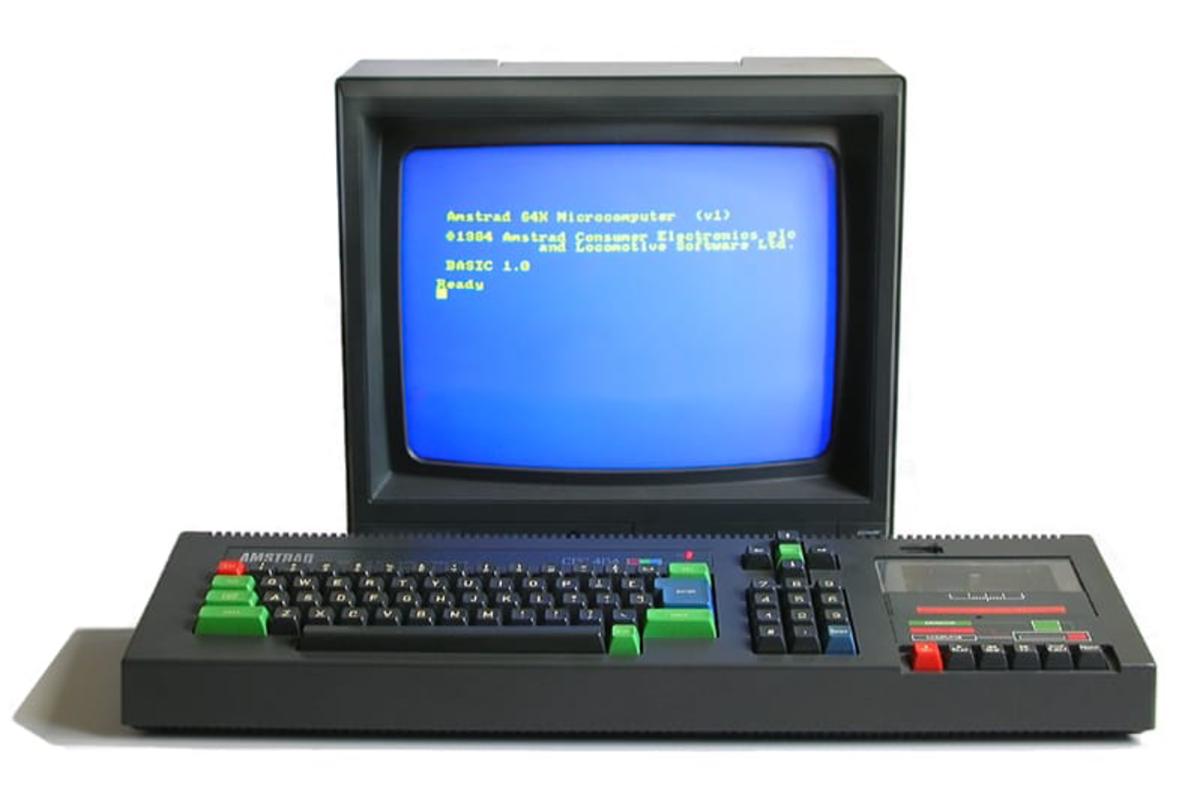The Marvellous Magical Monochromatic Machine
As youngsters back in the day, most of us had very little say in what our guardians provided for us, clothing, food, bedtimes, first names, brand of bubblebath, these are all things that were largely beyond our control.
This meant many a warm sunny evening in the early ’80s in my by-then trademark denim bell-bottom dungaree and t-shirt combo. This also meant that when everyone else had a Commodore 64, I was still getting by with a VIC-20. And by ‘getting by’, I mean ‘pretending that I had a Commodore 64’
Tell it like it was

The VIC-20, and then the ZX Spectrum that replaced it, were for everyone in the house, this meant sharing with my evil siblings. There were fights, balloons may have been ‘accidentally’ popped, fingers jammed in doors, I’m not confirming or denying anything but eventually something had to give. Strangely, it was the folks, they finally caved and got a computer that was just for little me!
Early adoption
I’m going to be honest, I had a less than stellar homelife. I did not get on well with my step-father or my siblings, I was also extremely fragile emotionally and prone to sudden explosive bursts of anger, so when I got sat at the dining table for a ’talk’ I naturally assumed that they were sending me away to a children’s home. Genuinely it had been discussed in front of me a few times and I was actually coming around to the idea, but no!
There in front of me on the table was a large garishly printed box.
What was inside had a built in tape drive and it’s own monitor! It’s not what it had that was the problem though, it’s what it didn’t have, namely a badge that said Commodore 64. I had wanted the 64 so, badly, for so long, that I would have done almost anything to earn one. Unfortunately what I could do was pretty much limited to ‘Drop hints’ and ‘beg’. These were not strong strategies and had already failed me on the dungarees and t-shirt ensemble, now, once again, they had let me down.
They had got me an Amstrad CPC464. Not even the colour one, the one with the flipping Green screen!

So, you have probably detected some ingratitude there. This has been mellowed by many many years and a better understanding of the situation. Imagine if you will how I felt as a twelve-year-old, confused as to why my express wishes had been ignored, who already had no friends and had just found out that he had gained a new social herpes in computer form.
I genuinely felt betrayed, I didn’t react well.
Nooooooooo!
This put me in a familiar position. I had upset my parents but as usual I really had no idea why they were upset. To try and appease, which was another familiar position, I swallowed hard, balled all the resentment toward this machine into a red hot ball of hate, pushed it deep down inside and feigned as much gratitude as was humanly possible. Then I set the machine up and was greeted by the ready prompt and a small pile of pack-in tapes to play with. I started with ‘Oh Mummy’ since it had the coolest cover art and ended up playing it for nearly two hours, it was the only thing I loaded on day one, as once I did eventually get bored with it I started reading the manual and decided to try my hand at some of that programming that literally no one else my age had any interest in.
..Wargames?

Now this was a revelation. Previously I had lived within the ludicrous confines of the VIC-20’s tiny 3.5KiB of memory, then I had to deal with the stupid way you had to hunt for commands in tiny writing on the ZX Spectrum’s cold, fleshy keyboard. Here, I had a seemingly endless 64KiB and could type anything I wanted. Seriously, if I wanted to LOAD"AWESOME" I didn’t need to remember that LOAD involved pressing shift and then the ‘k’ key. All this freedom was powered by Zilog’s all powerful Z80 CPU, the same chip that powered Sinclair’s Spectrum, clocked at a whopping 4 MHz (albeit that effectively padding all the CPU instructions to a multiple of 4 cycles reduces the percieved speed to around 3.5MHz). This meant that porting games from the spectrum was relatively straightforward so there was a good library to choose from, unfortunately these ports were often done quickly and made no real use of the CPC’s much better audiovisual hardware, so they were largely awful.

Now, I was able to tell that colour clash was a thing because along with the computer I was also given an MP-1 modulator, this let me connect my new toy to a colour television and enjoy all 27 of the over saturated hues Amstrad could throw at me. This was a once in a while treat though, we only had one television, and it spent a lot of it’s time cheerfully distracting my little Sister.
Noise.
The sound, courtesy of the AY-3-8910 chip buried underneath the surprisingly responsive keyboard, was clear and tuneful, if not quite as capable as the Commodore 64’s 6581/8580 SID. While the CPC had 3 channels like the C64, the Amstrad could only generate 1 waveform, square, the Commodore could produce 4. I didn’t care. I still don’t
I spent hours on this machine painstakingly creating terrible art and revelling in the utter indifference of my immediate family, gaining a lifelong love of obsessing over the position and colour of a single pixel. This machine was my constant companion through all the difficult times between awkward freckle-faced twelve-year-old and, if anything, even more awkward acne-ridden and somehow still freckle-faced fifteen-year-old. I was massively disappointed when I first saw the machine, but I decided to work with what I had been given and in the end I grew to absolutely love the it. I’m not ashamed to say that I honestly feel the Amstrad CPC464 was the best of the 8-bit computers. Just bear witness to the glory!
Cover image courtesy of Anita S / Pixabay
Were you a victim of terrible ’70s style children’s clothing? You have my sympathies, we should probably start a group!